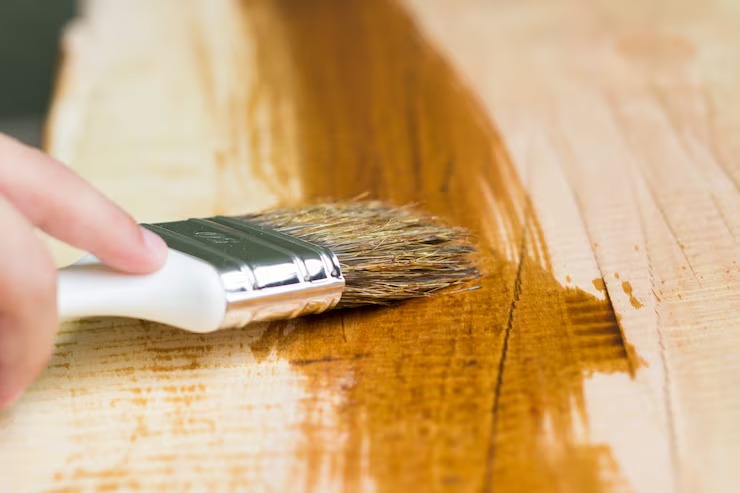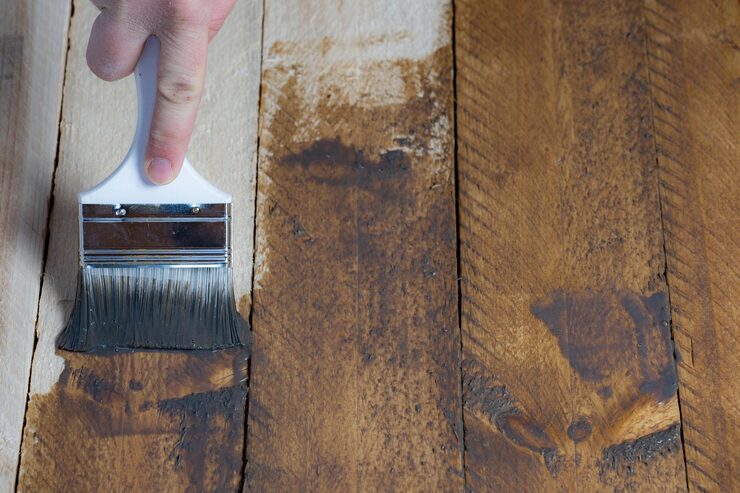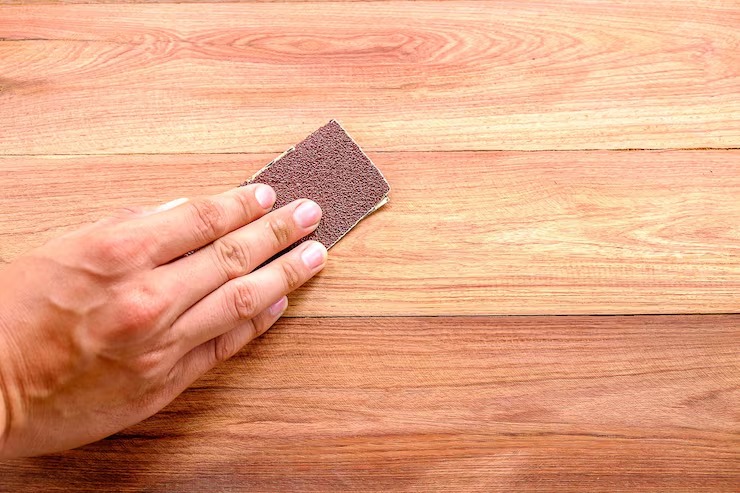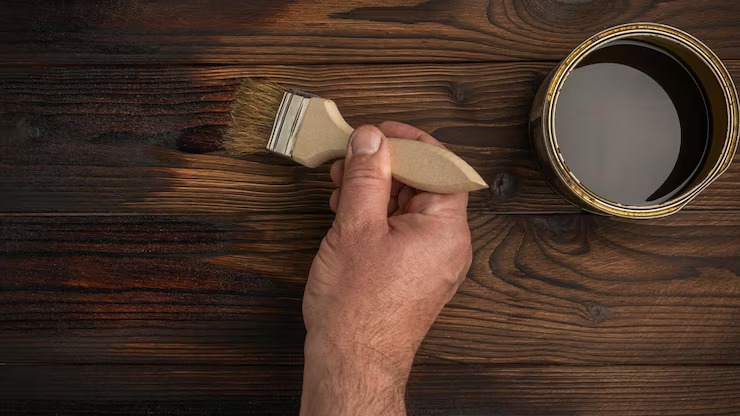Menu

✔ You can stain over paint, but it will look like a glaze rather than a natural wood finish.
✔ Staining without sanding is possible, but light sanding makes the finish stronger and longer lasting.
✔ Clean, sand, choose the right stain, apply thin coats, and seal for the best results.
When it comes to transforming old furniture, cabinets, or trim, one of the most common questions homeowners ask is: can you stain over paint? The idea of achieving a rich, wood-toned finish without stripping everything back to raw wood is appealing. But the process isn’t as simple as brushing on stains.
If you’ve ever wondered whether staining over paint is possible, we will break down everything you need to know.

Stain is traditionally used on bare wood to highlight its natural grain, while paint covers wood completely. Once a surface has been painted, the grain is sealed under that opaque layer. Naturally, many DIYers ask, can you stain over paint to restore a wood-like appearance or give painted surfaces a new personality.
The short answer: Yes, you can apply stain over paint, but the outcome depends on your preparation and the type of stain you choose. Stain won’t penetrate paint the way it does raw wood, so the finish will act more like a tinted glaze than a true wood stain.
Another commonly asked question is: can you stain over paint without sanding? The short answer is—it’s possible, but not recommended if you want long-lasting results.
Here’s why sanding makes a difference:
That said, there are a few exceptions:
If you’re trying to save time, at least scuff-sand lightly. Even five minutes of sanding can make the difference between a finish that lasts a year versus one that lasts a decade.
Before we dive into techniques, it’s important to set realistic expectations. Staining over paint presents unique challenges:

If you’re ready to give it a try, here’s how to do it the right way. By following these steps, you’ll ensure that applying stain over paint creates a durable, attractive finish that enhances your project.
When applying stain over paint, opt for:
Staining over white paint is possible, but the results are different from staining bare wood. Here’s what to keep in mind:
Furniture is one of the most common projects where people learn how to stain painted furniture. Unlike trim or cabinets, furniture gets handled often and needs extra durability.
Here’s the process tailored to furniture:

The stain won’t soak into the wood but instead sits on top of the paint, creating more of a tinted or glazed effect rather than a true stained finish.
Clean the surface thoroughly, scuff-sand or strip any damaged areas, and make sure the paint is smooth so the stain can adhere evenly.
It doesn’t ruin paint, but it can alter the color and may look blotchy if the surface isn’t prepared properly.
Without sanding, the stain may not bond well and can end up streaky, uneven, or prone to peeling over time.
Yes, but gloss paint is slick, so you’ll need to sand it down first to give the stain something to grip onto.
For over decades, Westport Professional House Painters has been helping homeowners achieve beautiful, long-lasting finishes. From interior and exterior painting to customized projects that bring your vision to life, our licensed team in Westport, CT, combines craftsmanship with customer care. We specialize in high-quality, affordable, and tailored painting services designed to match your unique needs.
Don’t settle for less when it comes to your home’s appearance. Contact Westport Professional House Painters today!